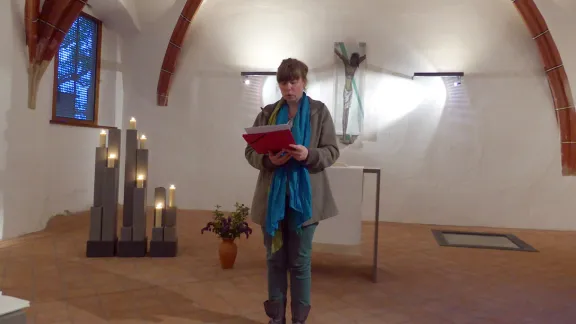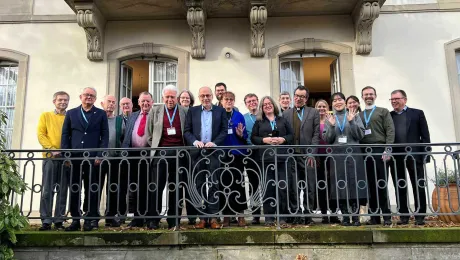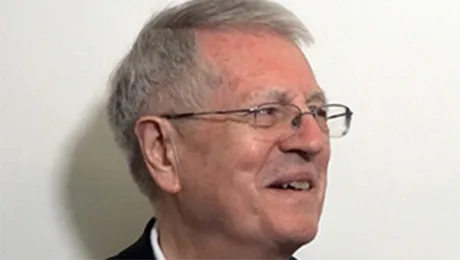
Santa Barbara Chapel
By Rev. Dr Elaine Neuenfeldt & Rev. Annette Kalletka
We started our European WICAS Conference in a historical place, in Meissen.
We were invited to meditate in a chapel named after St. Barbara. In a very deep spiritual moment we were invited to remember our past to empower our present, by knowing the history of the place where we were celebrating.
Remembering the past to empower women today, means also to recover the stories of the places, of the room, of the walls, of the doors and windows, asking for the relationships created and nourished.
So, we learned more about St. Barbara – one of our foremothers in faith - and the history of this place bearing her name from Rev. Annette Kalletka of the Evangelical Lutheran Church of Saxony in Germany.
Dear sisters in Christ
I want to share with you some thoughts and ideas about this particular room and the topic of our conference and the aim of our being together.
We are gathered here in a chapel called St. Barbara. In the pictures of St. Barbara, one from a church in Wismar and the other in Dargun in Northern Germany, Barbara’s typical symbol is a tower – she holds a tower in her hand.
According to the “legenda aurea” Barbara was a woman who lived in the 3rd century – a long time ago, before the period of the European Reformation which took place in the 16th century. But she is part of our tradition. She belongs to the foremothers of our Christian belief. She is one of the brave women who stood up for their faith. She is part of an on-going reformation – right from the beginning of the Christian community up to today. Barbara came from a town which is now called Izmir in Turkey. She was a daughter of a rich salesman/merchant. When her father was away selling and buying things, Barbara was kept in a tower. So she had time to read about Christian life and faith. She even got in contact with Origines, one of the old, so called church fathers. Barbara decided to become a Christian. Secretly she was baptized. When her father came home again and heard about her new way of life he was shocked and angry and even decided to kill her with his sword. She died. And it is told that her father was killed the same moment by lightening that suddenly struck from the sky.
Every year on the 4th of December people think of St. Barbara. There is the tradition to cut some branches from a fruit tree and put them in a vase with water. In most cases they will green and bloom on Christmas. Barbara is said to be the patron not only for miners who dig for coal in the mountains; but she is also said to be the patron for cooks.
This interestingly relates us to the story of this chapel where we are together.
I gathered some information about this chapel. It was built in 1480. At that time there was a monastery here. Next to the monastery was a school. Nowadays, again there is a school right there. During and after the time of Reformation from 1543 till 1811 the pupils used to eat here.
It was their dining room. Later on it became the kitchen. Meals were cooked here. Women baked bread, cared and nourished thousands of people, mainly girls and boys. In the time from 1929 till 1999 there was a restaurant here, called “monastery”.
For me it is interesting and also inspiring to know that women were cooking here. Preparing meals, cooking and baking, serving, caring for people’s basic needs – which is culturally attributed to women’s work. Women are said to be responsible for these things…
In German, my mother tongue, the words for kitchen – Küche and church – Kirche sound very familiar. And I know that in many homes the kitchen can be something like a holy room. I guess there is a relation between cooking and praying, between baking and preaching. Reading the Bible, interpreting and meditating the word of God are like tasting various spices. One has to experiment and try and discover things. To go for new ways, to discover the different meanings of God’s word is a creative and on-going process. Cooking and baking as well. Both will be done every day.
To come back to St Barbara, it seems that throughout all these times somehow St Barbara might have played a role. At least her name survived.
So, I guess it is not by coincidence that in this chapel people were and still are hosted for prayers and services, meditation and singing, but also were here for hospitality and nourishing.
For a few days we too are guest here in these rooms. For our spiritual nourishing we will come here into the chapel of St. Barbara!
Rev. Dr Elaine Neuenfeldt is the LWF Secretary for Women in Church and Society (WICAS).
Rev. Annette von Oltersdorf-Kalettka is a pastor in the Evangelical Lutheran Church of Saxony, Germany.


